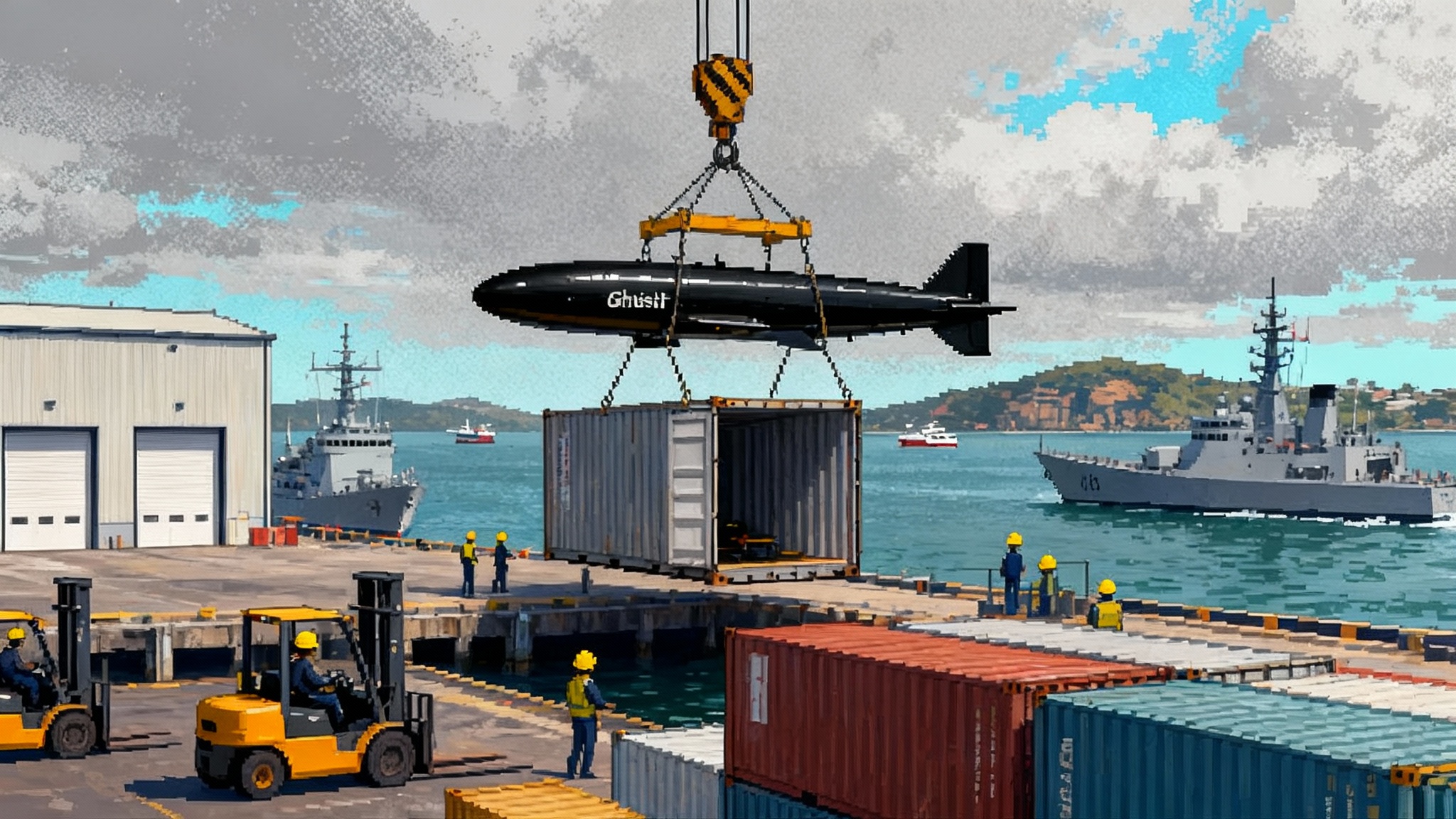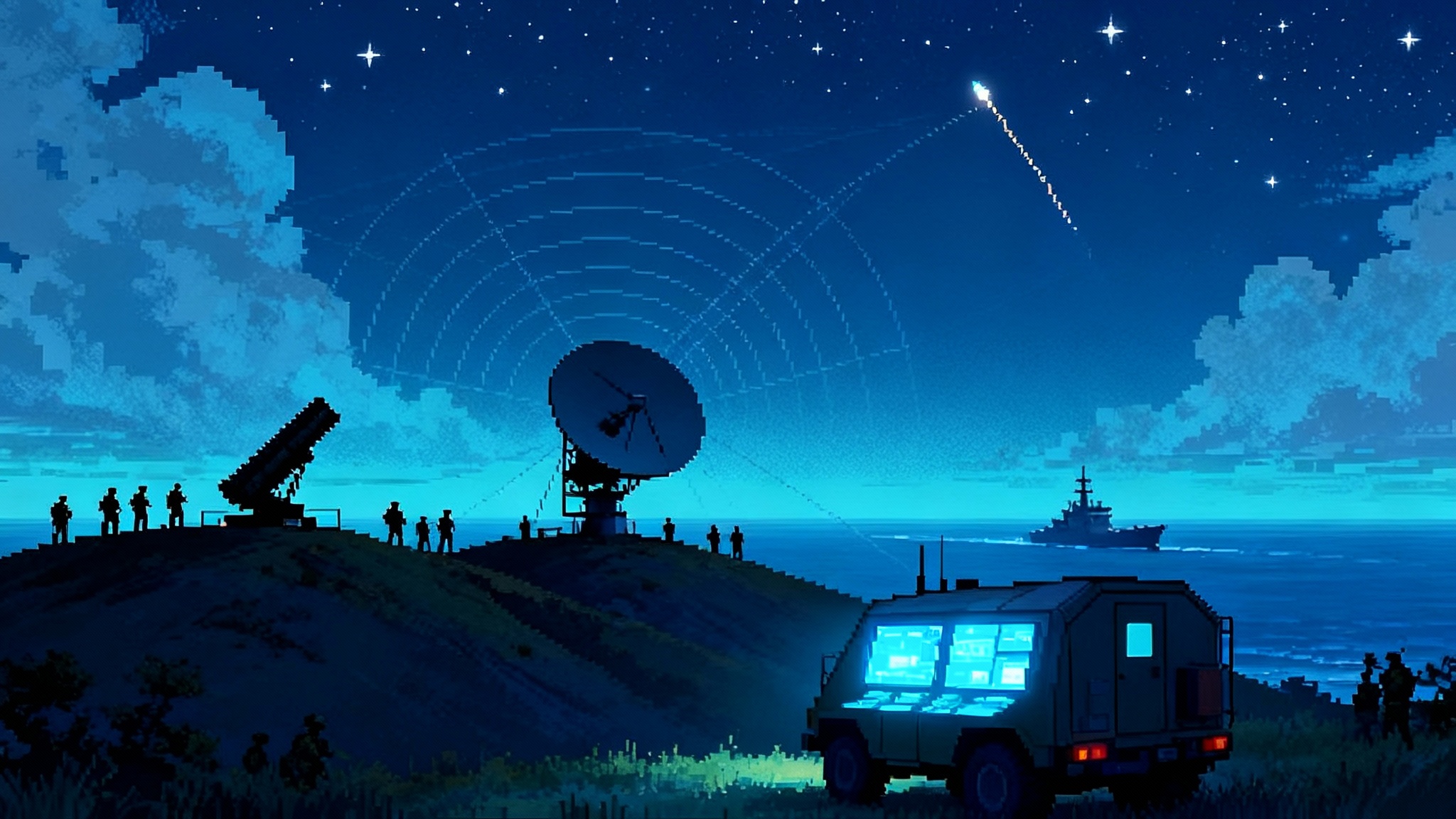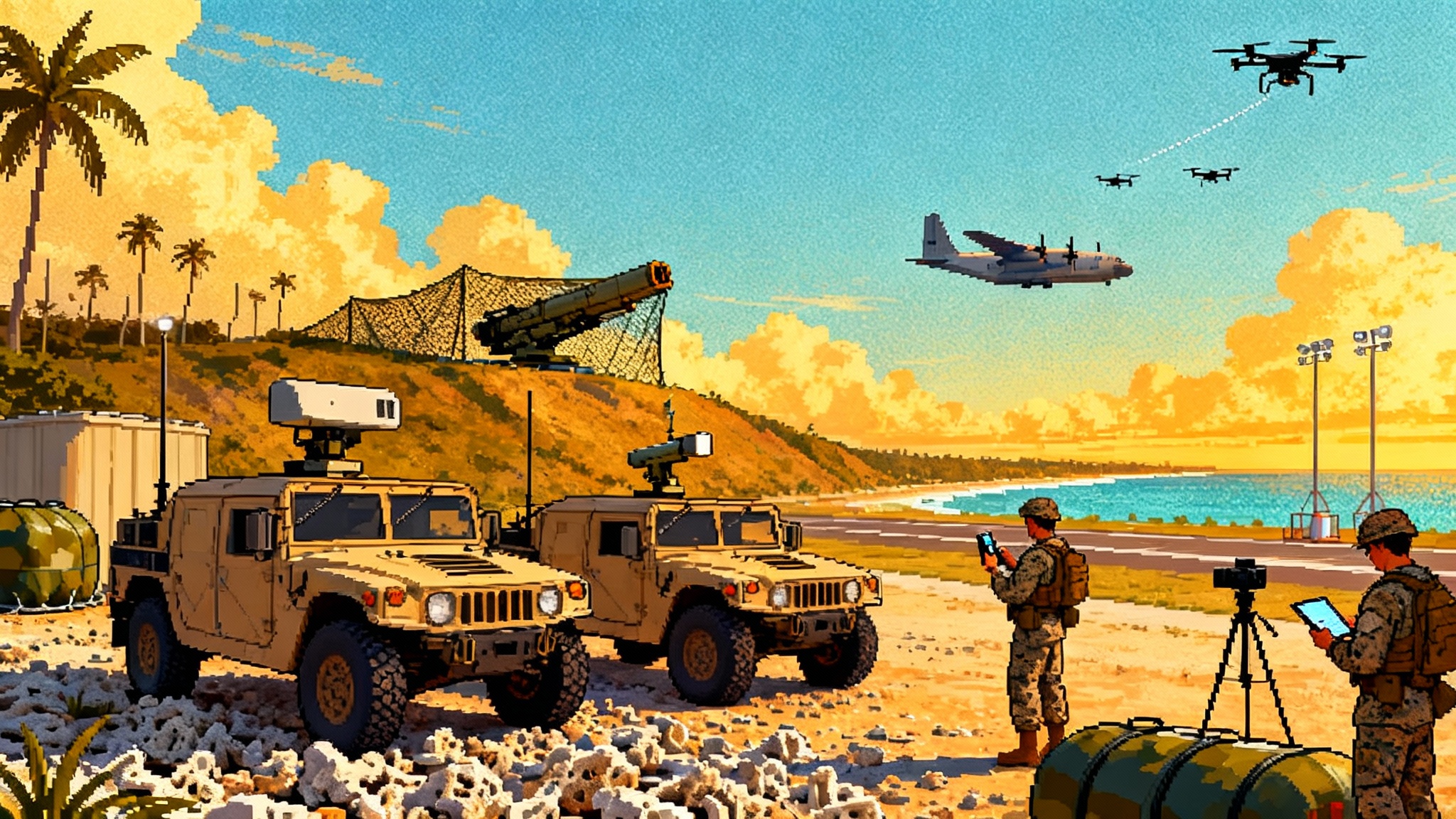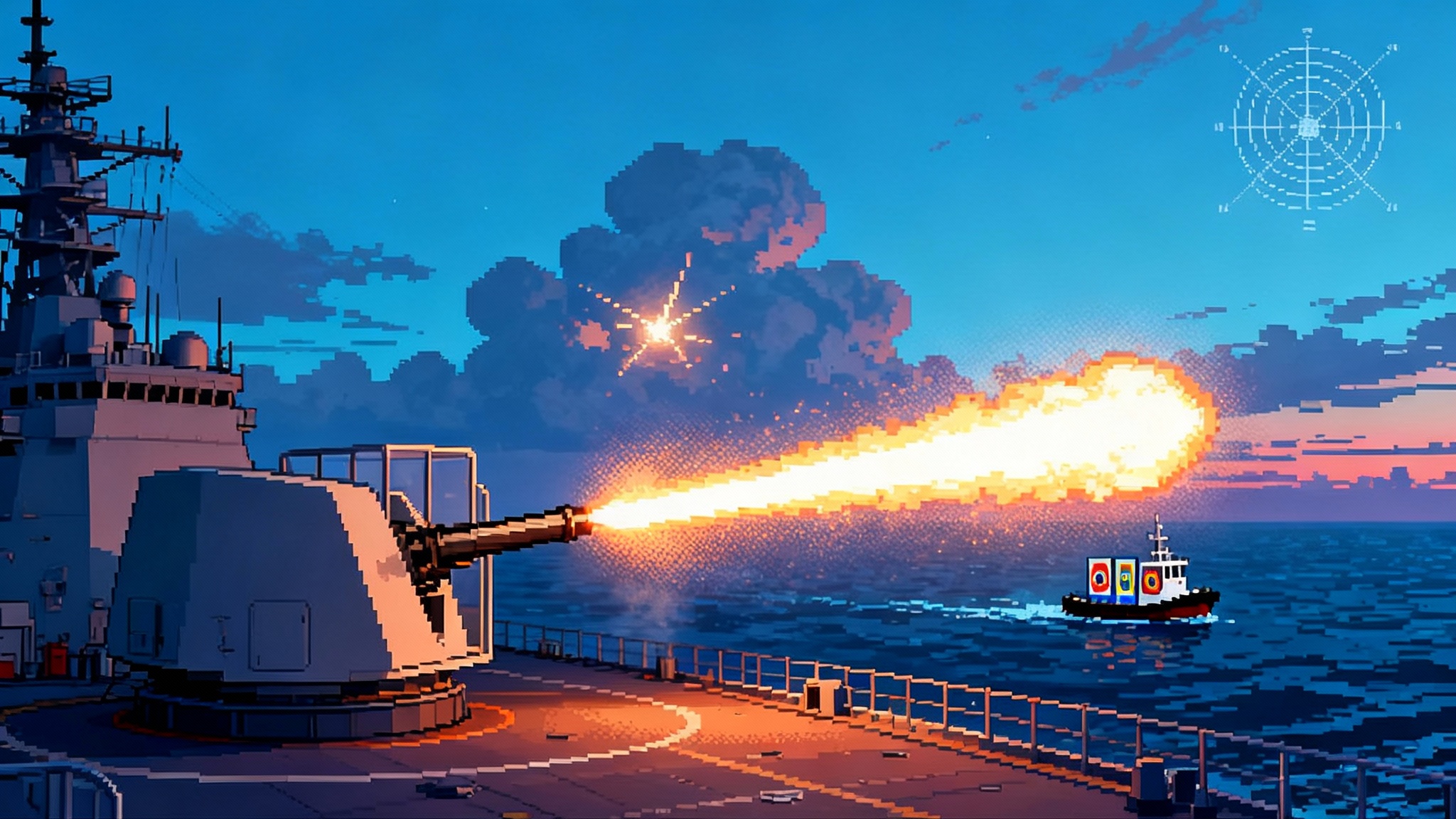NGJ-Mid-Band Enters Service, Growler Goes on Offense
With Next Generation Jammer Mid-Band entering service in 2025, the EA-18G Growler shifts from escort to systems hunter. See how the new pod breaks modern air defenses and what the fleet will field through 2027.

2025 puts Navy electronic attack on offense
The United States Navy is crossing a threshold in 2025. With Next Generation Jammer Mid Band reaching initial service and ramping into production, the EA-18G Growler stops being mostly a protective umbrella and becomes the tip of the spear for electromagnetic maneuver. This shift is more than a new pod on a familiar airplane. It is a change in how strike packages find and finish air defense systems, and in how the Navy plans to win the battle for the spectrum across a coalition.
Think of the electromagnetic spectrum as the lighting and acoustics of a theater. For decades, surface-to-air missile crews built their defenses around controlling those lights and sounds. The Growler with NGJ Mid Band rewires the theater lighting on the fly. The crew can dim certain spotlights, flood others, and replace steady tones with fast-moving riffs that leave the audience confused. In practical terms, the pod gives the aircraft range, power, agility, and precision in the heart of the radar bands that modern integrated air defenses rely on to target aircraft. That combination lets the Growler not only protect but also hunt.
How modern SAM networks defend
Modern surface-to-air missile networks are not single radars guarding a single missile battery. They are layered webs. Early warning radars scan wide volumes. Acquisition radars hand targets to engagement radars. Missile datalinks ride on their own frequencies. Command posts fuse tracks from passive sensors and third-party cueing. Mobility and emissions control keep these systems hard to pin down. For a related look at how networks tie sensors to shooters, see our explainer on IBCS integrated kill chains.
A strike package facing such a network must solve three problems quickly. First, it must force the network to reveal enough of itself to be mapped in real time. Second, it must break key links in that chain of sensors and shooters. Third, it must keep the network broken long enough to allow weapons to hit. That is where offensive electronic warfare matters. Without it, the strike relies on fleeting gaps or expensive standoff weapons. With it, the strike shapes the fight.
What NGJ Mid Band brings that legacy jamming could not
Legacy escort jammers grew up in an era of narrower bands and slower radars. They were effective but often coarse tools. The Next Generation Jammer Mid Band pod moves to an active electronically scanned array built with high power, fast steering, and digital waveform agility. In plain language, the pod can put energy precisely where it matters, hop across frequencies in microseconds, and vary techniques pulse by pulse.
That agility enables three decisive behaviors:
- Targeted power: Instead of blasting wide swaths, the pod concentrates power into thin beams that track the radar’s side lobes and main lobe. The Growler spends less energy and gets more effect.
- Coherent teamwork: Multiple Growlers can align their beams so their effects add together at the target radar. Two aircraft can act like one large virtual jammer.
- Technique on demand: The crew can shift between noise, deception, and denial techniques based on what the receivers hear. The pod can imitate, mislead, or blind on command.
Imagine a locksmith with a programmable pick. Instead of rattling every pin in the lock, the tool senses which pin resists and reshapes itself to lift that one. NGJ Mid Band does that for radar receivers. It listens, learns, and adapts within the same engagement.
Cracking a modern SAM network
Offensive electronic warfare is about breaking the network’s decision loop faster than it can repair it. Here is how a Growler section can do that in the mid band where many acquisition and engagement radars operate:
-
Expose the architecture: The Growlers enter on a route designed to force the network to scan. The pods listen and characterize who is emitting, what mode they are using, and how they are connected. A picture forms in seconds rather than minutes.
-
Pull apart the links: The jammers deny the engagement radar’s ability to measure range and velocity, while deceptive techniques feed false angle cues. At the same time, targeted energy cuts the datalink between the radar and its shooters. The battery still exists, but its components no longer agree.
-
Create safe corridors: By holding the most dangerous nodes at risk, the Growlers carve an opening. Strike aircraft ride that opening to release weapons from shorter range, which increases accuracy and reduces cost.
-
Harvest the chaos: As the network tries to switch to backups, new emissions appear. The pods classify those changes and hand targets to shooters armed with anti-radiation missiles. The more the defense reacts, the more it reveals.
This sequence turns the Growler from guardian to shepherd. It does not just protect the flock of strikers. It drives the air defense into positions where it can be culled.
Compressing the kill chain
Air forces talk about find, fix, track, target, engage, assess. The longer that sequence, the more time a defender has to adapt. NGJ Mid Band compresses those steps in three ways.
- Sensing and attacking at once: The same pod that classifies a radar can inject a tailored technique immediately. There is no waiting for a separate asset to arrive.
- Cross-cueing inside the formation: The Growler can pass precise geolocation and threat state to an F/A-18E/F or F-35C that is ready with weapons. In return, those aircraft provide angle or image cues that refine the jamming technique. The chain becomes a circle that tightens with every pass.
- Closing the loop in software: As the pod gathers data, mission data files update the technique selection on the same sortie. What used to take a lab cycle begins to happen at the edge.
A practical example: A battery shifts to a home-on-jam mode. Traditionally, the escort would pull back, and the strike would consider a new route. With the mid band pod, the crew changes the technique to preserve protection while denying the missile’s ability to ride the energy. The battery’s behavior becomes a targetable signature, not a showstopper.
Flipping the cost curve
For a decade, defenders have tried to make attackers pay more per shot. Long range interceptors and mobile launchers are expensive to kill, particularly at standoff. Offensive electronic warfare changes the math.
- Fewer expensive standoff weapons: If a Growler-led team can open a corridor and hold it open, strike aircraft can use shorter range weapons with higher loadouts. One aircraft can service more targets.
- More cheap shots from the enemy: The defender must fire more interceptors to regain a firing solution through the jamming. If those shots miss, the cost was all on the defense. For a parallel discussion of affordability, see how a ship railgun signals a new cost-per-shot era.
- Reusable effects: Jamming can be retargeted in seconds without expending a round. The same pod output can suppress multiple batteries in sequence.
The result is a simple shift. The attacker spends in training, pods, and software before the fight. The defender spends in missiles during the fight. That is the right side of the ledger for a long campaign.
What the 2025 production ramp unlocks
Initial service marks the start, not the finish. A ramp in pod deliveries during 2025 does three practical things for the fleet.
- It makes two-ship coherence routine: With enough pods on the flight line, squadrons can standardize on tactics that assume multi-ship coherence rather than treat it as a special event.
- It normalizes high tempo software updates: More pods mean more data, which justifies a faster rhythm of software loads and mission data refreshes. Crews train with the same builds they fight with.
- It spreads the load: Carriers can deploy with a deeper bench of aircraft that carry the new capability. A single down jet does not erase the new tactics. Expect these tactics to connect with new unmanned teammates, including carrier wingmen contracts in 2025.
The number that matters to operators is not the total pods produced. It is how many aircraft per deployment can carry them every day. That multiplier turns tactics from boutique to baseline.
Low Band follow on, the other half of the pincer
Mid band dominates the heart of many fire control radars. Low band reaches further and addresses early warning and long wavelength sensors that are tough to suppress with mid band techniques alone. As the low band pod moves from development toward broader testing and early fielding, the combined effect is a pincer.
- Low band creates uncertainty at scale: It stresses wide area surveillance radars, datalinks, and network timing. The defender becomes less sure of what exists and where.
- Mid band delivers precision at the edge: It isolates the engagement radars that still manage to track.
Together, they produce a fight in which the defender cannot coordinate across long ranges and cannot lock on at short ranges. For strike leaders, that means fewer surprises on ingress and a cleaner egress timeline.
Coalition fielding with the Royal Australian Air Force
The Royal Australian Air Force operates the Growler and has lived the realities of coalition electronic attack from day one. As NGJ Mid Band enters service with the United States Navy, a practical path opens for shared tactics development, mission data exchange, and eventual coalition fielding. This complements broader AUKUS integration, where autonomous systems like Ghost Shark show how rapidly fielded capability can scale, as covered in AUKUS undersea strike begins.
A coalition approach pays off in three concrete ways.
- Shared threat libraries: When aircraft from two nations observe a radar in different modes on different days, fusing those observations accelerates identification and countermeasure tuning.
- Interoperable tactics: If both forces practice the same timing for coherent beams and handoffs, they can plug into each other’s strike plans without weeks of rehearsal.
- Distributed sustainment: Pods and parts can move across the coalition to recover readiness faster at sea and at remote bases.
For the Indo Pacific, where distance and operating tempo strain logistics, coalition fielding is not a nice to have. It is a force multiplier.
Mission data and tactics pipelines that move at the speed of relevance
Electronic warfare rises or falls on the freshness of its mission data and tactics. The right pipeline has three legs and a clear rhythm.
- Sensing at the edge: Squadrons collect, label, and upload signals with context. A short checklist at shutdown ensures the data includes location, time, pod configuration, and flight member notes. If it is not labeled, it is not learnable.
- Adversary-in-the-loop testing: Hardware in the loop labs replay what the fleet saw against digital twins of the pods and radars. The lab validates new techniques in hours and assigns a confidence score.
- Distribution with roll back: Software loads and mission data files push to squadrons with a tested fallback. If a load underperforms, crews can roll back in minutes.
Set a two week sprint as the default. That does not mean crews update every two weeks on deployment. It means the whole system expects and accepts that pace. The payoff is a library that keeps pace with an adaptive adversary.
Rapid software drops without drama
The hardest part of fast software in aviation is not coding. It is certification and integration into flight operations. Three practices make rapid drops routine, not risky.
- Decouple content from carriage: Treat the pod’s mission data file as content and the aircraft’s operational flight program as carriage. Certify interfaces once, then update content often.
- Fly-to-verify in a rhythm: Reserve a small number of sorties every month for verification flights that mirror the lab setups. Crews know they will see new software, and maintainers know they will collect structured feedback.
- Publish pilot-readable changes: Every drop includes a one page tactics change log that says what changed, why it matters, and how to recognize a regression. If a crew cannot brief it, it is not ready.
With this approach, software stops arriving as a quarterly surprise. It becomes part of the process of flying and fighting.
Tactics the fleet can adopt now
- Plan for multi-ship coherence as the default: Build route packages that assume two or more pods will work together, with timing points and failover plans if one ship aborts.
- Write engagement playbooks for the top five threats: For each radar family, define the first three jamming techniques, the expected defender reactions, and the trigger to shift to deception. Practice the sequence in simulators before workups.
- Pair Growlers with a shooter that can exploit openings: An aircraft carrying anti-radiation and decoy weapons should be on the radio plan and in formation. If the door opens and no one is ready to step through, the opportunity is wasted.
- Put a mission data officer in the ready room: Make one person accountable for the feedback loop between flights and the lab. Accountability produces tempo.
Risks and how to reduce them
- Overreliance on mid band: Defenders will adapt with more low band search and passive detection. Mitigation is early integration of low band pods and more decoys to dilute passive sensors.
- Logistics drag: A new pod means new parts and test gear. Mitigation is forward-positioned spares on each carrier and a shared pool with allies.
- Software sprawl: Too many loads create confusion. Mitigation is a clear versioning scheme and a rule that mixed loads fly only when the change log says they can.
What success looks like in 2027
By 2027, spectrum dominance will look less like a static advantage and more like a rhythm the force imposes on the fight. The markers of that success are measurable.
- Mid band pods are the everyday tool for carrier air wings, not a specialty item for select detachments.
- Low band pods are integrated enough to disrupt early warning while mid band holds down engagement radars on demand.
- Coalition Growlers train and deploy with shared mission data baselines, and can exchange files during deployments.
- Mission data and software move on two week sprints ashore and one month cycles afloat, with hardware in the loop in constant use.
- Strike commanders plan around electronic attack effects as the first lever, not a supporting act.
If those markers are in place, the Navy will not be asking air defenses to make a single big mistake. It will force them to make dozens of small ones in quick succession.
The bottom line
NGJ Mid Band’s arrival in service in 2025 is a turning point because it puts control of the spectrum back in the attacker’s hands. With power, precision, and agility where it matters, the Growler becomes a systems hunter that opens doors for the rest of the air wing. The follow on low band pod, a deliberate coalition approach with the Royal Australian Air Force, mission data and tactics pipelines that move fast, and stress free software drops are the path to a true advantage by 2027. The work is practical and specific. Fly coherent. Update often. Share across the coalition. Win the timeline in the spectrum first, and the rest of the fight becomes far easier.








